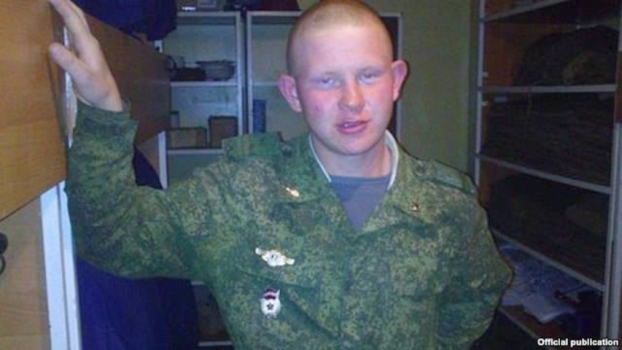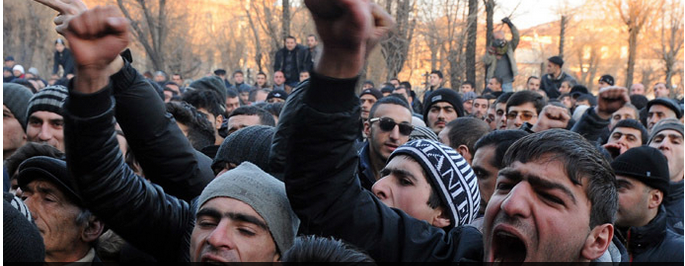Russia has made a lot of attempts to re-establish connections with the former Soviet Republics. For example, the Eurasian Customs Union came into existence on January 1, 2010 as the Customs Union of Belarus, Kazakhstan, and Russia, and was enlarged to include Armenia and Kyrgyzstan from January 1, 2015.
The events in Ukraine have damaged Russian relationships with Belarus and Kazakhstan. These countries have populations with a high percentage of Russian speakers. They take to heart Russian claims to the Russian speaking territories of Ukraine. As the result the friendly relationships with Armenia became especially important to the Russian government.
But on Monday, January 12, an event occurred that could ruin Russian–Armenian relationships.
There are 3,000 Russian soldiers officially reported to be stationed at the Russian Military Base located in Gyumri, the second largest city in Armenia. According to some media reports, on Monday a Russian soldier, Valery Permyakov, left his sentry position reports with the intention to desert. He entered an Armenian home in the neighborhood and killed six members of the family in their home – including a two-year-old girl, whom he pierced with his bayonet. According to some reports Permyakov had a previous psychiatric record.

Russia has promised to investigate the shootings, but has refused to hand the soldier over to Armenian authorities, as Russian law requires Russian soldiers be tried in Russian Courts.
On Thursday clashes erupted in Gyumri as thousands of protesters marched from the prosecutor’s office to the Russian consulate, and then began hurling stones and bottles at police. Police responded with stun grenades. Some 14 people – including four officers – were reportedly injured. Police detained the most violent protesters.

Armenian protesters shout slogans in front of the prosecutor’s office in Gyumri (AFP Photo/Karen Minasyan)
Since Monday, when the heinous crime was committed, out of all of Russian media, only news websites and some non-central television channels reported on it. Leading TV networks such as First Channel and Rossia did not mention the developments. Instead, the number one news piece on all their programs was an image of a Donbas boy severely burned as a result of shooting of Ukrainian “fascists”.
This Russian silence appeared strange to many in Armenia.
Levon Barseghyan, editor at the Armenian Gyumri-based Asbarez Club of Journalists, wrote on the web site www.armenianow.com that he is not surprised at the situation. He thinks this has become a pattern on Russian television, something that he says contradicts the basic principles of journalism and free speech.
“They believe that it is a disgrace for Russia. I think that there would be nothing disgraceful about the news if they did report it, as truth is dearer,” said Barseghyan, calling it another manifestation of how Russia treats Armenia.
Barseghyan added:
“Our Armenian television channels, of course with some exceptions, were also afraid. TV channels with large audiences have been extremely cautious in covering the developments. The Armenian authorities fear lest they embarrass Moscow.”

